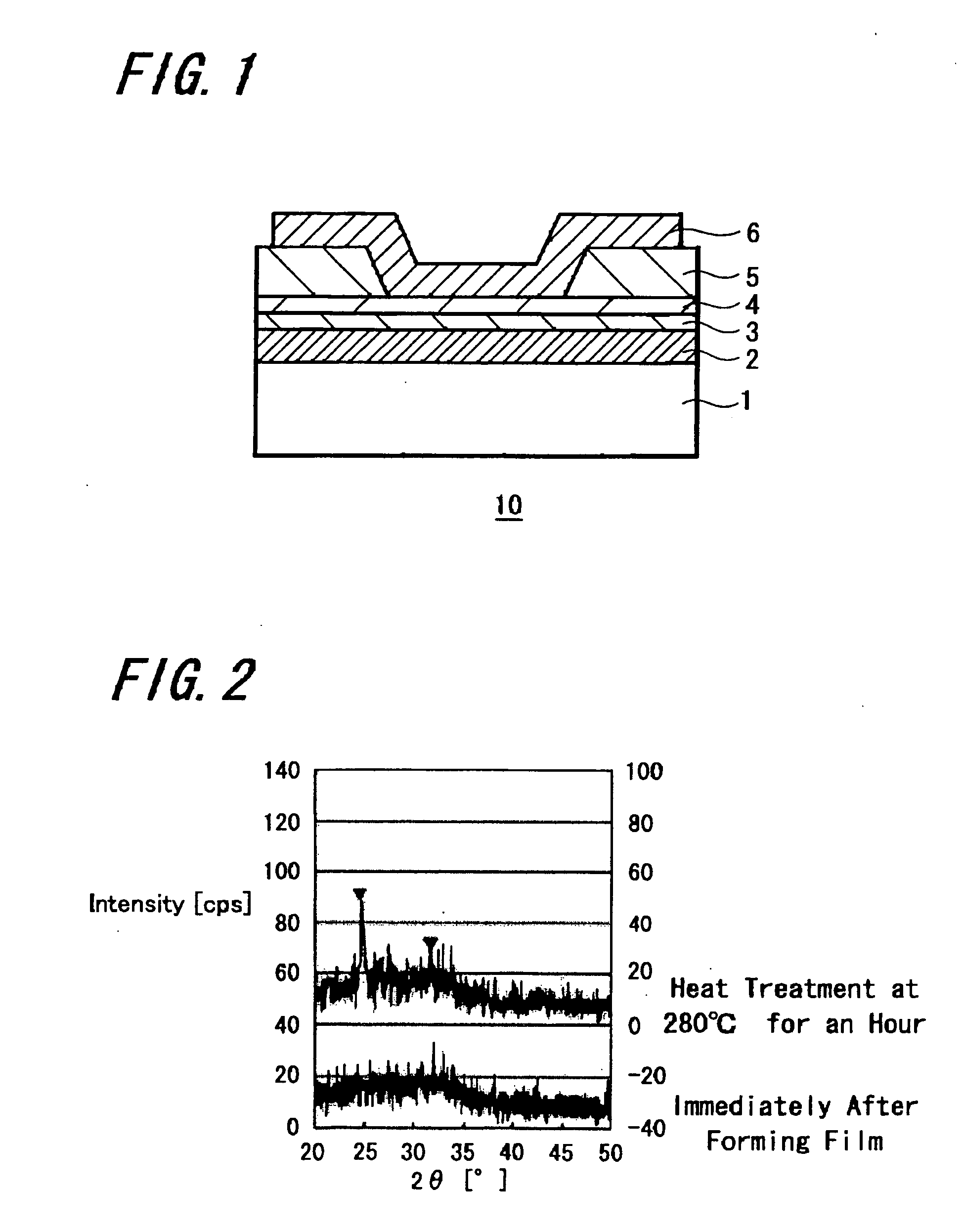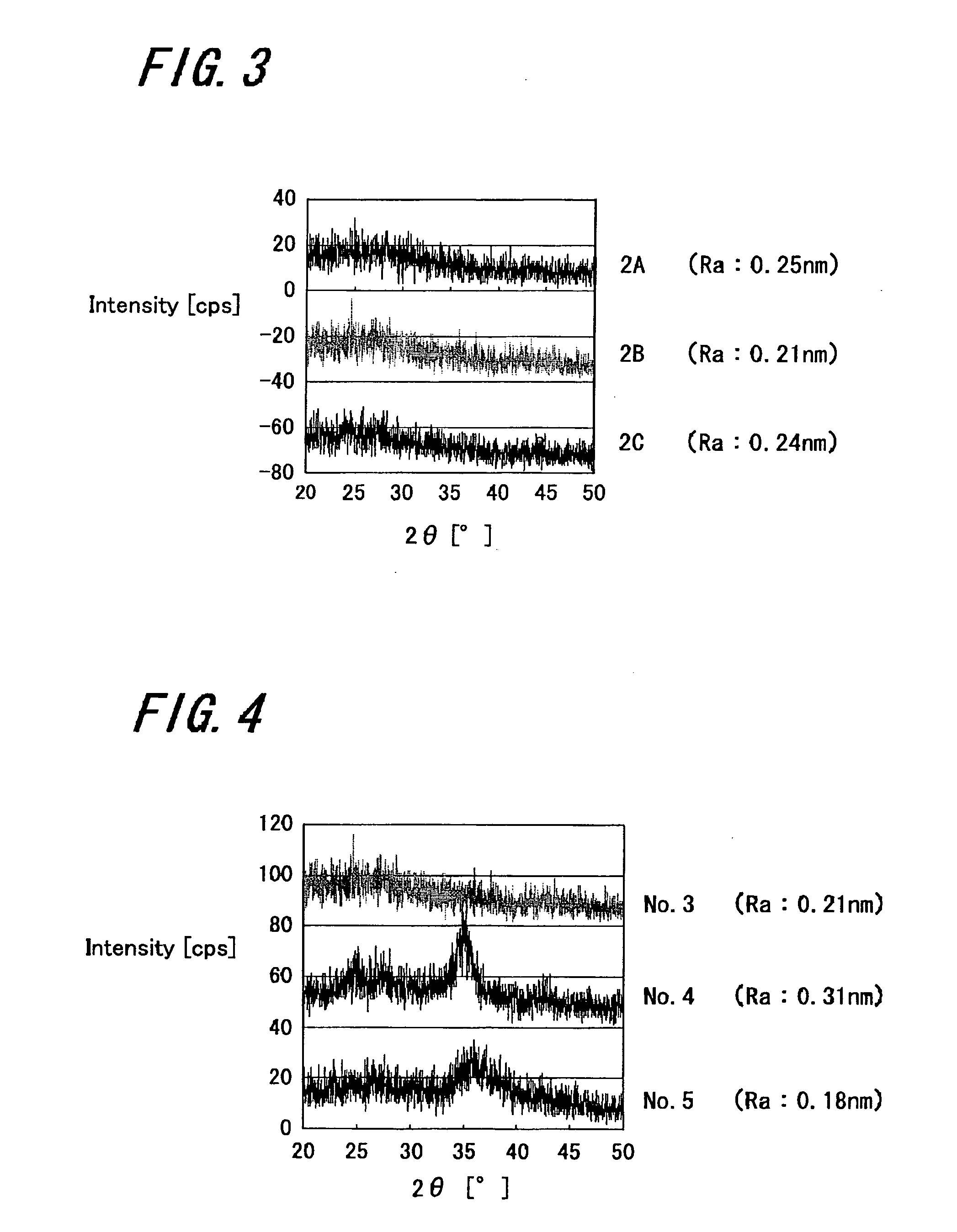Memory element and memory device
a memory element and memory technology, applied in the field of memory elements, can solve the problems of heat damage to the mos transistor formed in advance, difficult mass production at low cost, and inability to meet the requirements of production, etc., and achieve the effects of reducing production costs, reducing production costs, and ensuring the effect of quality
- Summary
- Abstract
- Description
- Claims
- Application Information
AI Technical Summary
Benefits of technology
Problems solved by technology
Method used
Image
Examples
experiment 1
[Experiment 1]
[0153] On a silicon substrate, a WN film of 20 nm in thickness was deposited as the lower electrode 2, a Cu61Te21Ge5B8 film was formed thereon as the ion source layer 3, an GdN film of 2.5 nm in thickness was formed as the memory thin film 4 and photoresist was formed to cover the surface, and after that, exposure and development were performed by means of photolithography to form an opening (through hole) in the photoresist on the memory thin film 4.
[0154] After that, air was evacuated to be a vacuum and then replaced with nitrogen atmosphere to perform annealing treatment in the nitrogen atmosphere and the photoresist was transformed to be the insulation layer 5 as hard-cured resist which is stable with respect to temperature, etching and the like. It should be noted that hard-cured resist was used as the insulation layer 5 because of convenience to be formed in simple and easy manner in the experiment, and when manufacturing commercial products, it is preferable th...
experiment 2
[Experiment 2]
[0168] A Cu61Te27Ge7Gd5 film was formed as the ion source layer 3, and a memory element 10 of a sample 11 was obtained in which the other structure was similar to the sample 9.
[0169] Further, a Cu56Te25Ge6Gd5B8 film was formed as the ion source layer 3, and a memory element 10 of a sample 12 was obtained in which the other structure was similar to the sample 9.
[0170] Further, a Cu51Te23Ge6Gd5B15 film was formed as the ion source layer 3, and a memory element 10 of a sample 13 was obtained in which the other structure was similar to the sample 9.
[0171] Further, a Cu49Te21Ge5Gd4B20 film was formed as the ion source layer 3, and a memory element 10 of a sample 14 was obtained in which the other structure was similar to the sample 9.
[0172] Among those samples, each of the samples 12 to 14 has a structure according to a practice example of the memory element of the present invention, and the sample 11 has a structure of a comparative example.
[0173] After the heat treat...
experiment 3
[Experiment 3]
[0177] A memory element in which the ion source layer 3 contains rare-earth elements and silicon (Si) was made and the I-V characteristic was studied.
[0178] A Cu51Te31Ge8Gd6Si4 film was formed as the ion source layer 3, and a memory element 10 of a sample 15 was obtained in which the other structure was similar to the sample 9.
[0179] Further, a Cu48Te28Ge7Gd6Si12 film was formed as the ion source layer 3, and a memory element 10 of a sample 16 was obtained in which the other structure was similar to the sample 9.
[0180] Further, a Cu40Te24Ge6Gd5Si26 film was formed as the ion source layer 3, and a memory element 10 of a sample 17 was obtained in which the other structure was similar to the sample 9.
[0181] After the heat treatment in nitrogen atmosphere at 280° C. was performed on each memory element of those samples 15 to 17, I-V characteristic was measured. Measurement results of the I-V characteristic were shown in FIG. 11A to 11C. FIG. 11A shows measurement resul...
PUM
 Login to View More
Login to View More Abstract
Description
Claims
Application Information
 Login to View More
Login to View More - R&D
- Intellectual Property
- Life Sciences
- Materials
- Tech Scout
- Unparalleled Data Quality
- Higher Quality Content
- 60% Fewer Hallucinations
Browse by: Latest US Patents, China's latest patents, Technical Efficacy Thesaurus, Application Domain, Technology Topic, Popular Technical Reports.
© 2025 PatSnap. All rights reserved.Legal|Privacy policy|Modern Slavery Act Transparency Statement|Sitemap|About US| Contact US: help@patsnap.com



